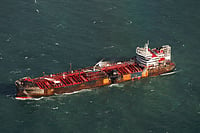ISRO is set to execute a critical manoeuvre on Saturday to position the Aditya-L1 spacecraft, India's inaugural space-based observatory dedicated to studying the Sun, into its final orbit approximately 1.5 million kilometres from Earth.
According to ISRO officials, the spacecraft will be manoeuvred into a halo orbit around Lagrange point 1 (L1) of the Sun-Earth system, situated about 1.5 million km from Earth. The L1 point represents around one per cent of the total distance between Earth and the Sun.
A satellite in a halo orbit around the L1 point offers a significant advantage of continuous Sun observation without occultations or eclipses. This advantage enhances the ability to observe solar activities and their impact on space weather in real time.
"This manoeuvre (scheduled for approximately 4 pm on Saturday) will secure the Aditya-L1 in a halo orbit around L1. If we neglect this step, there's a possibility it may continue its trajectory, possibly towards the Sun," reportedly said an ISRO official to PTI.
The Polar Satellite Launch Vehicle (PSLV-C57) launched the Aditya-L1 spacecraft from the second launch pad of Satish Dhawan Space Centre (SDSC), Sriharikota, on September 2 last year. After a 63-minute and 20-second flight duration, it successfully entered an elliptical orbit of 235x19500 km around Earth.
The spacecraft underwent a series of manoeuvres, heading towards Sun-Earth Lagrange Point 1(L1), escaping Earth's sphere of influence.
The Aditya-L1 carries seven payloads dedicated to observing the photosphere, chromosphere, and the outermost layers of the Sun (the corona) using electromagnetic, particle, and magnetic field detectors.
"Utilizing the unique vantage point L1, four payloads directly observe the Sun, while the remaining three payloads conduct in-situ studies of particles and fields at Lagrange point L1, contributing vital scientific insights into the propagatory effect of solar dynamics in the interplanetary medium," stated the space agency.
The Aditya L1 payloads are anticipated to provide crucial information to comprehend the challenges of coronal heating, coronal mass ejection, pre-flare and flare activities, characteristics of space weather dynamics, and particle and field propagation.
The primary scientific objectives of the Aditya-L1 mission include:
- Studying the dynamics of the Solar upper atmosphere, chromospheric, and coronal heating.
- Investigating the physics of partially ionized plasma, initiation of coronal mass ejections, and flares.
- Observing the in-situ particle and plasma environment, providing data for the study of particle dynamics from the Sun.
- Understanding the physics of the solar corona and its heating mechanism.
- Diagnosing the coronal and coronal loops plasma: Temperature, velocity, and density.
- Examining the development, dynamics, and origin of coronal mass ejections (CMEs).
- Identifying the sequence of processes leading to solar eruptive events across multiple layers (chromosphere, base, and extended corona).
- Studying magnetic field topology and making magnetic field measurements in the solar corona.
- Investigating drivers for space weather, including the origin, composition, and dynamics of solar wind.


























